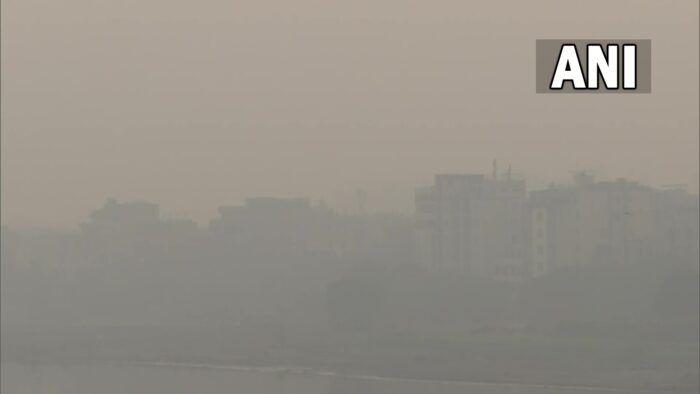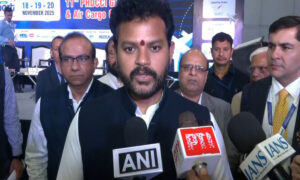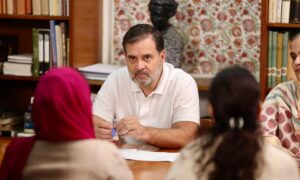
Picture : Twitter / ANI
Skies over Delhi hung heavy with smoke and its air quality inched towards “severe” category on Diwali night as people burst firecrackers in a blatant disregard to the government’s ban against it, imposed amid an increase in the contribution from farm fires.
People from several parts of the city and its suburbs complained of itchy throat and watery eyes, as a layer of smog, the first episode this season, enveloped the environment.
As per PTI report, Residents of Lajpat Nagar in South Delhi, Burari in North Delhi, Paschim Vihar in West Delhi and Shahdara in East Delhi reported incidents of firecracker bursting as early as 7 pm, despite the blanket ban in the national capital till January 1, 2022.
Several incidents of high-intensity cracker bursting were reported from Gurugram and Faridabad.
The Haryana government had also imposed a ban on Sunday on the sale or use of all kinds of firecrackers in 14 of its districts in the National Capital Region, while curbs were put in other parts.
Experts predicted the air quality here may plunge to the severe category by midnight owing to unfavorable meteorological conditions – calm winds, low temperature and low mixing height – and a poisonous cocktail of emissions from firecrackers, stubble burning and local sources.
The India Meteorological Department (IMD) said the “first episode of fog” in the capital reduced visibility at the Indira Gandhi International Airport and the Safdarjung Airport to the range of 600-800 metres in the morning.
“It continued to remain in the poor range of 800-900 meters in smog throughout the day due to calm wind conditions,” senior IMD scientist R K Jenamani said.
The first episode of smog coincided with the share of farm fires in Delhi’s pollution increasing to the season’s highest at 25 per cent.
“The PM2.5 pollution in the national capital may enter the ‘severe’ zone by midnight even if there is only 50 per cent of firecrackers emission as compared to last year,” said Gufran Beig, the founder-project director of SAFAR.
[the_ad id=”41103″]


















